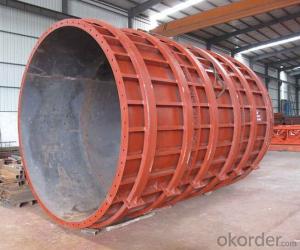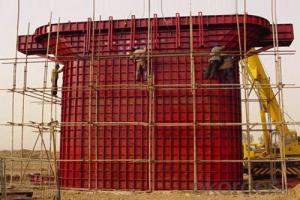Steel Formwork for Tunnel Building with thick Steel Plate
- Loading Port:
- Tianjin
- Payment Terms:
- TT OR LC
- Min Order Qty:
- 100 pc
- Supply Capability:
- 100000 pc/month
OKorder Service Pledge
OKorder Financial Service
You Might Also Like
Introduction for Steel Formwork :
Steel Formwork:used in highway,railway,bridge,tunnel and shearing wall,etc.Our company CNBM which is one of the largest State-Owned Enterprises in China which established in 1984 , has gained the confirmation from the specialist of China Architecture Scence Institute, and has been used by many building operation units and has been highly praised.In 2014, the total turnover volume of CNBM exceeds US$410 billion dollars with a total staff of 180,000. CNBM is listed in the World Top 500 Enterprises !
Characteristic for Wholly Steel Formwork :
1. High Smooth Surface
2. Convex ling for Edge Rib
3. Specialized Connection Pin for Edge Rib Connection
4. High Stiffness for Steel Surface
5. Light Weight for saving producing cost
6. Fast Separate and Easy transport
7. Recycling using
8. Scientific and Reasonable design to meet different working condition
Parameter and Specification :
Code | Size (mm) | Weight (KG) | Code | Size (mm) | Weight (KG) |
P12021 | 1200*2100*55 | 102.96 | P4018 | 400*1800*55 | 28.3 |
P12018 | 1200*1800*55 | 88.4 | P4015 | 400*1500*55 | 23.8 |
P12015 | 1200*1500*55 | 74.15 | P4012 | 400*1200*55 | 19.1 |
P12012 | 1200*1200*55 | 60.11 | P4009 | 400*900*55 | 14.6 |
P10018 | 1000*1800*55 | 76.01 | P4007 | 400*750*55 | 12.3 |
P10015 | 1000*1500*55 | 63.96 | P4006 | 400*600*55 | 9.95 |
P10012 | 1000*1200*55 | 60.11 | P3018 | 300*1800*55 | 20.7 |
P10009 | 1000*900*55 | 39.32 | P3015 | 300*1500*55 | 17.4 |
P9018 | 900*1800*55 | 70.89 | P3012 | 300*1200*55 | 14 |
P9015 | 900*1500*55 | 59.47 | P3009 | 300*900*55 | 10.7 |
P9012 | 900*1200*55 | 48.03 | P3007 | 300*750*55 | 8.8 |
P7518 | 750*1800*55 | 57.8 | P3006 | 300*600*55 | 7.3 |
P7515 | 750*1500*55 | 48.47 | P3004 | 300*400*55 | 5.46 |
P7512 | 750*1200*55 | 39.16 | P2515 | 250*1500*55 | 15.17 |
P7509 | 750*900*55 | 29.85 | P2512 | 250*1200*55 | 12.24 |
P7507 | 750*750*55 | 24.81 | P2509 | 250*900*55 | 9.32 |
P6018 | 600*1800*55 | 43.1 | P2507 | 250*750*55 | 7.71 |
P6015 | 600*1500*55 | 36.3 | P2506 | 250*600*55 | 6.39 |
P6012 | 600*1200*55 | 31.7 | P2015 | 200*1500*55 | 11.6 |
P6009 | 600*900*55 | 23.9 | P2012 | 200*1200*55 | 9.4 |
P6007 | 600*750*55 | 18.55 | P2009 | 200*900*55 | 7.1 |
P6006 | 600*600*55 | 16.25 | P2007 | 200*750*55 | 5.9 |
P5018 | 500*1800*55 | 36.27 | P2006 | 200*600*55 | 6.39 |
P5015 | 500*1500*55 | 30.15 | P2004 | 200*450*55 | 3.64 |
P5012 | 500*1200*55 | 25.55 | P1515 | 150*1500*55 | 9.5 |
P5009 | 500*900*55 | 20.38 | P1506 | 150*600*55 | 4 |
P5007 | 500*750*55 | 15.48 | P1504 | 150*450*55 | 2.98 |
P5006 | 500*600*55 | 13.58 | P1015 | 100*1500*55 | 7.5 |
Code | Size (mm) | Weight (KG) |
P1012 | 100*1200*55 | 6.9 |
P1009 | 100*900*55 | 4.6 |
P1007 | 100*750*55 | 3.8 |
P1006 | 100*600*55 | 3.1 |
P1004 | 100*450*55 | 2.33 |
E1515 | 150*150*1500 | 15.2 |
E1512 | 150*150*1200 | 12.26 |
E1509 | 150*150*900 | 9.34 |
E1507 | 150*150*750 | 7.77 |
E1506 | 150*150*600 | 6.46 |
E1504 | 150*150*450 | 4.87 |
E1015 | 100*150*1500 | 13.13 |
E1012 | 100*150*1200 | 10.61 |
E1009 | 100*150*900 | 8.07 |
E1006 | 100*150*600 | 5.44 |
Y1018 | 100*150*1800 | 14.56 |
Y1015 | 100*150*1500 | 12.29 |
Y1012 | 100*150*1200 | 9.72 |
Y1009 | 100*150*900 | 7.46 |
Y1007 | 100*150*700 | 6.19 |
Y1006 | 100*150*600 | 5.19 |
Y1004 | 100*150*450 | 3.92 |
J0018 | 50*50*1800 | 4.34 |
J0015 | 50*50*1500 | 3.7 |
J0012 | 50*50*1200 | 2.94 |
J0009 | 50*50*900 | 2.3 |
J0007 | 50*50*750 | 1.9 |
J0006 | 50*50*600 | 1.5 |
J0004 | 50*50*450 | 1.13 |
FAQ :
1. Who are we ?
We , CNBM , are a State-Owned Enterprise which established in 1984 , have 32 years experience ,enjoy high reputation .
2. Our Advantage :
Customized products , we have our own R&D department , we can design the drawing and suggest the suitable solution for your project .
3. Our after-Sales Service :
The international Sales Manager and Engineer can go to your job site for work direction and help you deal with your project .
Factory Photos :
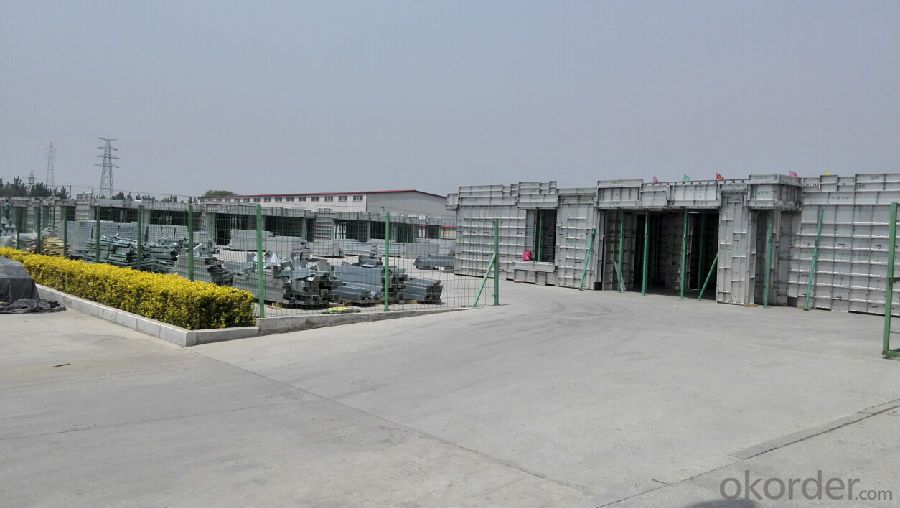


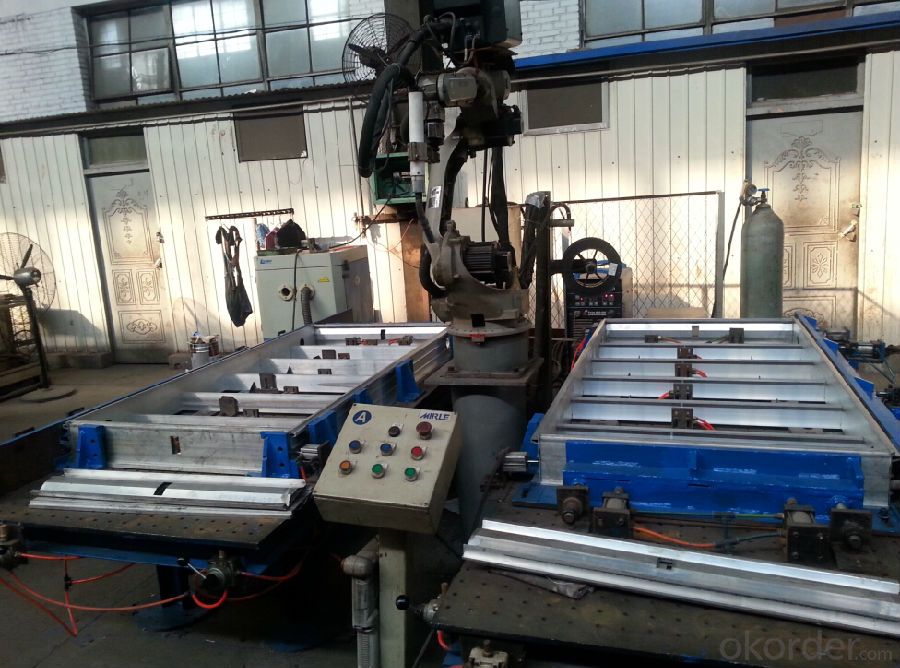
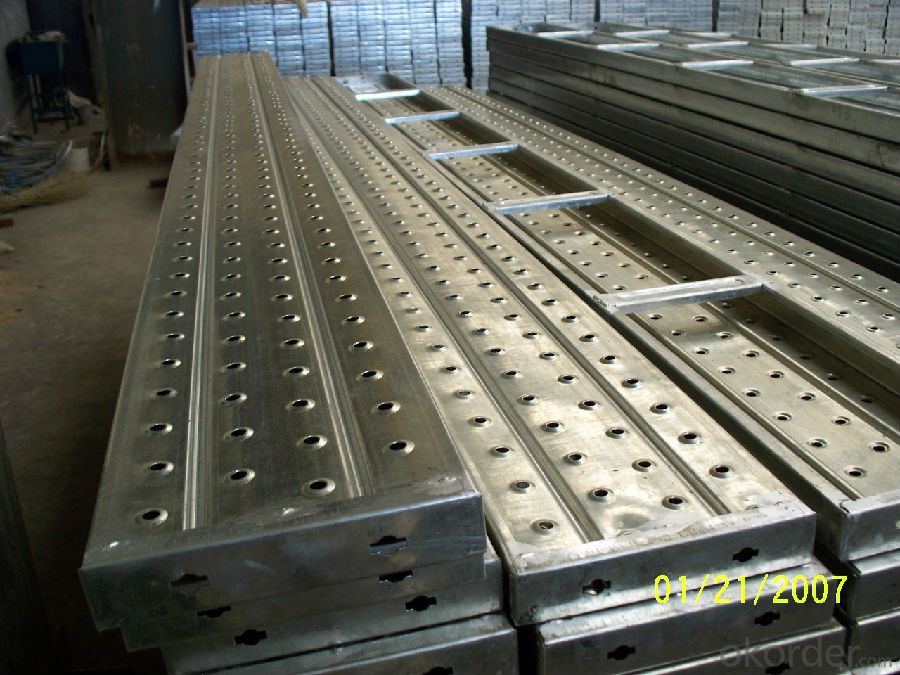
- Q:What are the different sizes and dimensions of steel formwork?
- The sizes and dimensions of steel formwork can vary depending on the specific requirements of the construction project. However, common sizes range from 1.2 meters to 2.4 meters in width and 2.4 meters to 4.8 meters in length. The thickness of the steel sheets used for formwork can also vary, typically ranging from 3mm to 6mm.
- Q:What are the different types of lifting systems used in steel formwork?
- There are several types of lifting systems used in steel formwork, each designed to meet specific requirements and provide efficient and safe lifting operations. Some of the common types include: 1. Crane lifting system: This is the most common and widely used lifting system in steel formwork. Cranes with various capacities are used to lift and position the steel formwork panels and components. They offer flexibility, high lifting capacity, and are suitable for large-scale construction projects. 2. Mechanical lifting system: This system utilizes mechanical devices such as winches, hoists, or jacks to lift and position the steel formwork. It is suitable for smaller projects or areas where cranes cannot access. Mechanical lifting systems are portable, easy to operate, and can be used in confined spaces. 3. Hydraulic lifting system: Hydraulic systems use fluid pressure to lift and move the steel formwork. They offer precise control and can handle heavy loads with ease. Hydraulic lifting systems are commonly used in high-rise buildings and projects where smooth and controlled lifting is required. 4. Manual lifting system: In some cases, manual lifting systems are used, especially for smaller formwork components or when there is limited access for machinery. This method involves manual labor to lift and position the steel formwork. It is cost-effective but requires more manpower and may not be suitable for larger or heavier formwork elements. 5. Pneumatic lifting system: Pneumatic lifting systems use compressed air to lift and move the steel formwork. They offer quick and efficient lifting operations and are suitable for projects with specific requirements, such as those involving hazardous materials or explosive environments. The choice of lifting system depends on various factors, including the size and weight of the formwork, project requirements, available resources, and site conditions. It is important to consider safety measures and ensure proper training and supervision when using lifting systems to prevent accidents and ensure smooth construction operations.
- Q:What are the environmental considerations of using steel formwork?
- When considering the environmental impact of using steel formwork, several factors need to be taken into account. Firstly, the production of steel involves the extraction of iron ore, which can have negative environmental consequences. Mining activities can lead to deforestation, habitat destruction, and soil erosion. Additionally, the extraction process requires a significant amount of energy, often obtained from non-renewable sources, contributing to greenhouse gas emissions. Another environmental consideration is the transportation of steel formwork. Steel is a heavy material, and moving it from the manufacturing site to the construction site can result in increased fuel consumption and emissions. This is especially true in cases where the construction site is located far from the steel manufacturing facility. However, it is important to note that steel formwork can have several environmental advantages as well. Steel is a durable material that can be reused multiple times, reducing the need for new formwork production. This helps to minimize the demand for raw materials and reduces waste generation. Steel formwork can also be easily recycled at the end of its lifespan, further reducing the environmental impact. Moreover, steel formwork is known for its strength and stability, which can result in more efficient construction processes. This can lead to reduced construction time and lower energy consumption during the building phase. To mitigate the environmental impact of using steel formwork, it is important to prioritize sustainable practices throughout its lifecycle. This includes sourcing steel from responsible suppliers who prioritize environmental stewardship, promoting recycling and reuse of formwork, and optimizing transportation and logistics to reduce carbon emissions. Overall, while there are environmental considerations associated with using steel formwork, its durability, reusability, and recyclability make it a viable option for sustainable construction practices when managed responsibly.
- Q:What are the common safety training requirements for steel formwork installation?
- To ensure worker safety and project success, steel formwork installation requires adherence to various safety training requirements. These requirements may differ based on local regulations and company policies. However, some common safety training requirements for steel formwork installation are as follows: 1. Comprehensive Construction Safety Training: Workers involved in steel formwork installation must undergo general construction safety training. This training covers topics like hazard identification, proper use of personal protective equipment (PPE), emergency procedures, and safe work practices. It equips workers with a basic understanding of construction site safety. 2. Fall Protection Training: Given the elevated nature of steel formwork installation, fall protection training is crucial. Workers must be trained on the appropriate use and inspection of fall protection equipment, such as harnesses, lanyards, and anchor points. They should also learn how to set up and dismantle temporary fall protection systems like guardrails and safety nets. 3. Training for Material Handling and Lifting: Steel formwork components can be heavy and require proper lifting techniques to prevent injuries. Workers should receive training on safe lifting practices, including correct body mechanics, proper use of lifting equipment like cranes or forklifts, and an understanding of load capacities. 4. Scaffold Safety Training: Scaffold usage is common in steel formwork installation to access higher areas. Workers should be trained on safe scaffold erection, inspection, and usage. This includes knowledge of scaffold components, stability, fall protection while on scaffolds, and safe work practices. 5. Electrical Safety Training: Steel formwork installation may involve working near electrical systems or equipment. Workers should receive training on electrical safety, including identifying electrical hazards, implementing lockout/tagout procedures, and maintaining safe distances from power lines. 6. Hazard Communication Training: Workers should undergo training on hazard communication protocols, including the identification and comprehension of safety data sheets (SDS) and proper handling of hazardous materials commonly used in steel formwork installation. 7. First Aid and CPR Training: In the event of an accident or injury on the job site, workers should be trained in basic first aid and cardiopulmonary resuscitation (CPR) techniques. This training enables workers to stabilize injured individuals until professional medical assistance arrives. Employers must ensure that all workers receive comprehensive safety training prior to beginning steel formwork installation. Regular refresher courses and ongoing safety awareness programs should also be conducted to reinforce safe work practices and maintain a high level of job site safety.
- Q:Can steel formwork be used in cold weather conditions?
- Certainly! Steel formwork is applicable even in cold weather conditions. Steel, being a robust and enduring material, possesses the capability to withstand extreme temperatures. Nevertheless, it is imperative to consider the potential impact of cold weather on both the construction process and the formwork's performance. The major concern during cold weather is the potential influence of freezing temperatures on the concrete's setting and curing processes. Consequently, this can lead to construction delays and a compromise in concrete quality. To address this issue, several measures can be implemented when employing steel formwork in cold weather conditions. To begin with, it is of utmost importance to ensure that the formwork is adequately insulated to prevent heat loss and maintain the necessary temperature for the concrete. This can be accomplished by incorporating insulating materials like polystyrene or foam boards around the formwork. Furthermore, heating devices such as electric blankets or heat lamps can be utilized to sustain the desired temperature during the curing process. These devices should be strategically positioned to uniformly distribute heat without causing damage to the steel formwork. Additionally, meticulous planning of the construction schedule is crucial. This includes taking into consideration the weather forecast and avoiding concrete pouring during periods of extremely low temperatures. Techniques such as utilizing accelerators or special admixtures for cold weather concreting can also be employed to expedite the concrete's setting rate and prevent freezing. In conclusion, while steel formwork can be employed in cold weather conditions, it is essential to implement appropriate precautions to ensure the successful completion of the construction project. Adequate insulation, the utilization of heating devices, and meticulous scheduling are indispensable in mitigating the potential challenges posed by cold weather on the formwork's performance and the concrete's quality.
- Q:How does steel formwork handle different concrete pumping methods?
- Steel formwork is a versatile and durable solution for handling different concrete pumping methods. It is designed to withstand the pressure and force exerted during the pumping process, making it suitable for various pumping techniques. One common concrete pumping method is the use of boom pumps, which involves a flexible or telescopic boom that extends to reach the desired location. Steel formwork can easily accommodate this method as it provides a stable and secure surface for the boom pump to rest on. The strong and rigid nature of steel ensures that the formwork remains intact and can withstand the weight and vibrations generated by the pumping process. Another popular pumping method is line pumping, which utilizes a series of pipes and hoses to transport concrete to the desired location. Steel formwork is compatible with this method as well, as the pipes and hoses can be easily secured to the formwork using clamps or brackets. The formwork acts as a support system for the pipes, ensuring that they remain in place and can effectively transport the concrete without any disruptions. Additionally, steel formwork can handle other concrete pumping methods such as trailer-mounted pumps or truck-mounted pumps. These methods involve the use of a portable pump that can be moved to different locations. Steel formwork can be easily repositioned or adjusted to accommodate the pump, providing a stable and reliable platform for the pumping process. Overall, steel formwork is a suitable choice for handling different concrete pumping methods due to its strength, stability, and adaptability. It can effectively support the equipment used in various pumping techniques, ensuring a smooth and efficient concrete placement process.
- Q:Can steel formwork be used for infrastructure construction projects?
- Yes, steel formwork can be used for infrastructure construction projects. Steel formwork is a versatile and durable option for constructing various types of infrastructure, such as bridges, tunnels, dams, and buildings. Its strength and rigidity make it suitable for withstanding heavy loads and high pressures, which are common in infrastructure projects. Additionally, steel formwork can be easily dismantled and reused, making it a cost-effective and sustainable choice for construction. Its flexibility allows for customization to meet specific project requirements, ensuring precise and accurate construction. Overall, steel formwork is a reliable and efficient solution for infrastructure construction projects.
- Q:Can steel formwork be used in bridge construction?
- Yes, steel formwork can be used in bridge construction. Steel formwork refers to the use of steel panels or frames to create the desired shape and structure of a bridge during the construction process. Steel formwork is often preferred in bridge construction due to its durability, strength, and ability to withstand the high loads and stresses that bridges are subjected to. It is capable of withstanding heavy concrete pouring and can be reused multiple times, making it a cost-effective choice for bridge construction. Additionally, steel formwork offers flexibility in design and allows for intricate and complex shapes to be constructed, ensuring the bridge meets the desired specifications and requirements. Overall, steel formwork is a popular choice in bridge construction due to its strength, durability, reusability, and versatility.
- Q:What are the common design considerations for steel formwork in earthquake-prone areas?
- In earthquake-prone areas, the design considerations for steel formwork are crucial to ensure the safety and stability of structures during seismic events. Some common design considerations for steel formwork in earthquake-prone areas include: 1. Material Strength: The steel used in formwork should have high tensile strength to withstand the lateral forces generated during an earthquake. High-strength steel, such as Grade 60 or Grade 80, is commonly used in earthquake-resistant formwork designs. 2. Reinforcement: The formwork should be adequately reinforced to enhance its rigidity and resistance to seismic forces. Additional reinforcement can be provided by adding steel braces, cross-bracing, or diagonal members to increase the structural integrity of the formwork system. 3. Connection Details: The connection details between different formwork elements should be designed to withstand the dynamic forces induced by earthquakes. Welded or bolted connections are commonly used, ensuring that they have adequate strength and ductility to resist seismic loads. 4. Stiffness and Flexibility: The formwork system should exhibit an appropriate balance between stiffness and flexibility. It should be rigid enough to resist lateral forces during an earthquake but also flexible enough to absorb and dissipate seismic energy without collapsing. 5. Anchorage Systems: Anchorage systems are crucial in securing the formwork to the foundation or supporting structure. These systems should be designed to resist the uplift and lateral forces generated during an earthquake and prevent the formwork from overturning or sliding. 6. Diaphragm Action: To enhance the overall structural performance, the formwork system should be designed to provide diaphragm action. This means that the formwork acts as a continuous and rigid panel transferring forces across its surface, thereby reducing localized stresses and improving the overall stability of the structure during an earthquake. 7. Formwork Compatibility: The steel formwork should be compatible with other structural elements, such as concrete columns, beams, and slabs. It is essential to ensure that the formwork system can adequately transfer the loads from the concrete to the supporting structure without compromising its stability or integrity during seismic events. 8. Construction Practices: In addition to design considerations, proper construction practices play a vital role in ensuring the effectiveness of steel formwork in earthquake-prone areas. Adequate bracing and temporary supports should be used during formwork assembly to maintain stability and prevent collapse before the concrete is poured and hardened. By considering these design considerations, engineers and designers can develop robust steel formwork systems that can withstand the forces exerted by earthquakes and ensure the safety of structures in seismic regions.
- Q:How does steel formwork handle surface imperfections in concrete?
- Steel formwork is a rigid and durable material that is able to handle surface imperfections in concrete effectively. Its strength and stability allow it to support the weight of wet concrete, preventing any deformation or distortion caused by uneven surfaces. Additionally, steel formwork provides a smooth and uniform surface, minimizing any irregularities or blemishes that may occur during the pouring and curing process of concrete. Overall, steel formwork offers excellent resistance to surface imperfections, resulting in high-quality and aesthetically pleasing concrete finishes.
1. Manufacturer Overview |
|
|---|---|
| Location | |
| Year Established | |
| Annual Output Value | |
| Main Markets | |
| Company Certifications | |
2. Manufacturer Certificates |
|
|---|---|
| a) Certification Name | |
| Range | |
| Reference | |
| Validity Period | |
3. Manufacturer Capability |
|
|---|---|
| a)Trade Capacity | |
| Nearest Port | |
| Export Percentage | |
| No.of Employees in Trade Department | |
| Language Spoken: | |
| b)Factory Information | |
| Factory Size: | |
| No. of Production Lines | |
| Contract Manufacturing | |
| Product Price Range | |
Send your message to us
Steel Formwork for Tunnel Building with thick Steel Plate
- Loading Port:
- Tianjin
- Payment Terms:
- TT OR LC
- Min Order Qty:
- 100 pc
- Supply Capability:
- 100000 pc/month
OKorder Service Pledge
OKorder Financial Service
Similar products
New products
Hot products
Related keywords
